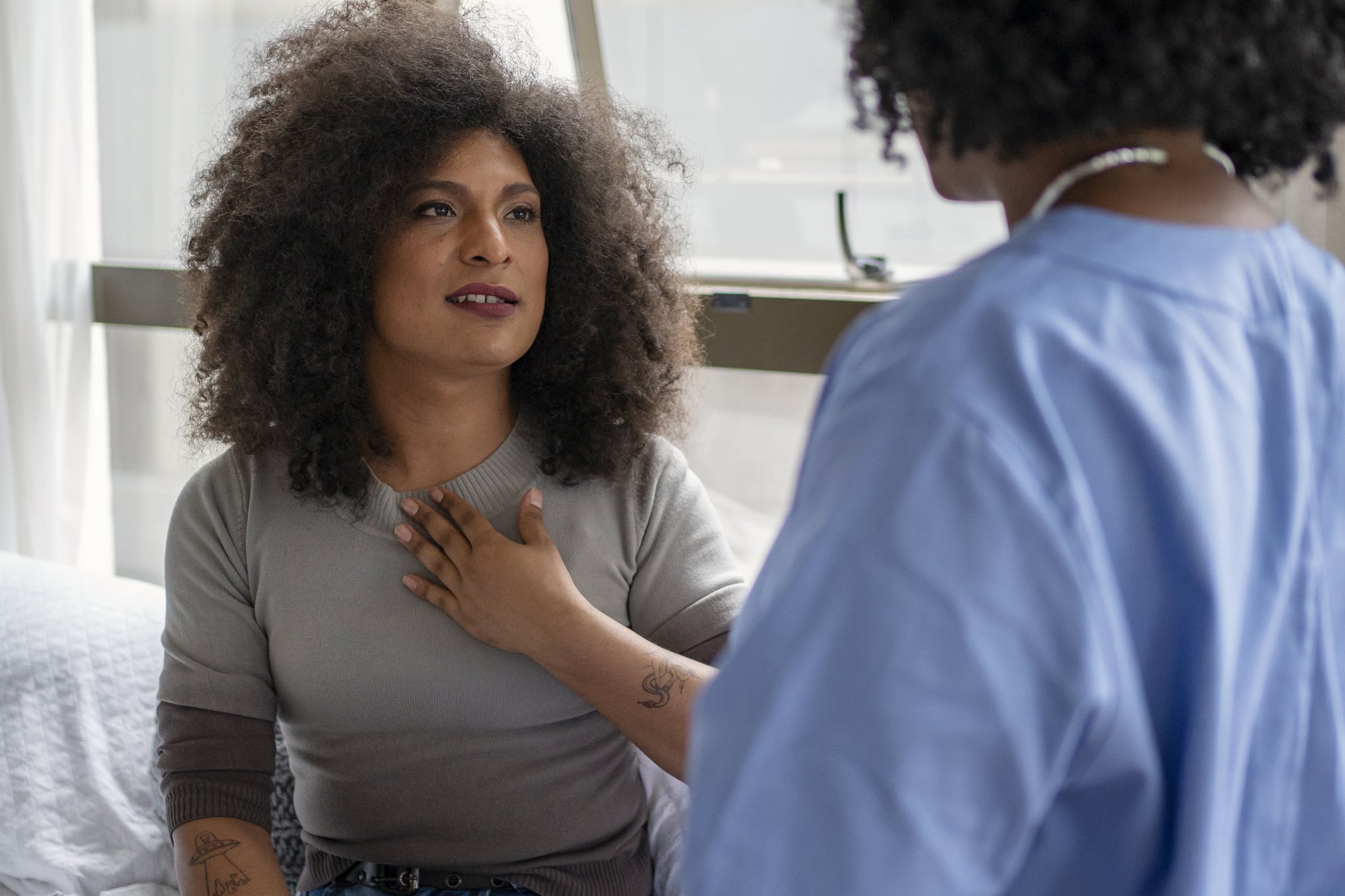
The Human Immunodeficiency Virus, or HIV, is a virus that attacks the immune system and makes it hard for the body to fight off infections. It also impacts many, as experts estimate that nearly 1.2 million people in the United States have HIV, with 13 percent not even knowing they have it.
Though anyone can contract HIV, the condition devastated the LGBTQ+ community in the ’80s and ’90s, as it became the leading killer of men ages 25-44 at one point in the United States. But while HIV/AIDS continues to have a disproportionate impact on queer people — particularly Black and Latino men and trans people — HIV is not exclusive to this demographic. Yet the legacy of the AIDs epidemic and its continued negative association with the queer community still fuel the stigma around HIV education and prevention to this day. So let’s be clear: everyone, regardless of background or sexuality, needs to educate themselves on the virus and consider their risk of exposure.
One of the best, most effective preventative methods to contracting HIV is taking PrEP (pre-exposure prophylaxis), a prescribed medication that lowers your chance of getting the virus. The CDC reports that PrEP, when taken as prescribed, reduces the risk of getting HIV from sex by about 99 percent, and for those who use injectable drugs, it reduces the risk by at least 74 percent. These statistics prove anyone who is sexually active or is an intravenous-drug user should assess their risk for HIV and consider their options to prevent HIV.
In an editorial statement on HIV screening and PrEP, HIV researchers Hyman Scott, MD, and Paul Volberding, MD, wrote, “Together, the health gains in HIV treatment, the resulting reduction in transmission, and PrEP provide the necessary tools to end the HIV epidemic.”
Ahead, we discuss how HIV works, your risk level, what PrEP does exactly, and how to access it.
What Is HIV? What Is AIDs?
To understand how to prevent HIV, you also need to understand how the virus works. HIV is spread through sexual fluids (including semen, preseminal fluid, rectal fluids, and vaginal fluids), blood (via transfusion or needle sharing), as well as through pregnancy and breast milk, per the CDC.
HIV weakens the immune system by attacking T cells (the white blood cells that fight off infection), leaving those with HIV more susceptible to illness. HIV can develop into AIDS, but the two terms are not synonymous. HIV and AIDs mean different things, as someone with HIV is considered to have AIDS when the T-cell count falls to a certain level or if they develop one or more opportunistic infections — meaning infections that occur in people with compromised immune systems. With modern treatment, Mayo Clinic reports that most people who have HIV will not develop AIDS. However, without treatment, HIV can develop into AIDS in eight to 10 years.
Unlike how it may be portrayed, HIV is not a death sentence, nor does it mean you can’t have a full, loving life. In fact, many people with HIV are able to manage the virus through antiretroviral treatment (ART), resulting in what’s called an “undetectable viral load.” This means that with daily treatment, HIV can be suppressed to undetectable levels, virtually eliminating the risk of transmission to sexual partners. If you’ve heard the slogan “undetectable = untransmittable” (sometimes styled as U=U), it’s referring to this exact scientific research, signifying that if your HIV levels become undetectable, you can not transmit HIV to a partner.
What Is PrEP?
PrEP is a prescribed medication, and you must be HIV negative prior to taking it in order for it to be effective. While HIV-prevention rates remain high with all three PrEP options, your doctor will look at your lifestyle and other factors (like assigned sex) to help determine which is the right option for you. Here are the three FDA-approved options.
- Truvada is a once-daily pill for people at risk of HIV through sex.
- Descovy is a once-daily pill for people at risk via sex. However, Descovy is not for people assigned female at birth (AFAB).
- Apretude is the only shot approved for use as PrEP. It’s administered by a healthcare provider every other month.
The CDC considers PrEP to require a high level of adherence, meaning taking PrEP is a serious commitment part of a larger, comprehensive HIV-prevention plan you decide with your healthcare provider. Deciding on PrEP with your healthcare provider should “include a discussion about adherence to PrEP, condom use to prevent getting other sexually transmitted infections (STIs), and other risk-reduction methods,” according to the CDC.
Is PrEP Safe?
Yes, PrEP is safe, per the CDC. There are some common side effects like diarrhea, nausea, headache, fatigue, and stomach pain, but the CDC says these usually resolve. However, there are more serious side effects to taking PrEP that you should consider with your doctor.
- For Truvada and Descovy, serious side effects may include kidney problems, liver problems, and lactic acidosis, which is what happens when there is too much lactic acid in the blood — a rare but serious medical emergency.
- For Apretude, side effects may include an allergic reaction, liver problems, depression, or mood changes. You should also avoid Apretude if you have certain allergies to cabotegravir or are taking the following medications: carbamazepine, oxcarbazepine, phenobarbital, phenytoin, rifampin, or rifapentine.
If you experience any of the above side effects, you should tell your doctor immediately or seek medical attention.
Who Should Take PrEP?
If you are sexually active or use intravenous drugs, you should speak to a trusted healthcare provider about whether taking PrEP is the right option for you. However, HIV.gov lists the following several factors that may increase your risk of HIV. If any of the below apply to you, it could mean you should consider taking PrEP.
- Living in a community with high rates of HIV. (You can find this out by visiting the CDC’s Atlas tool to see maps of HIV rates in your area.)
- Men who have sex with men.
- Trans women who have sex with men.
- People who inject drugs.
- Black and Latino men, who are disproportionately affected by HIV compared to other racial and ethnic groups.
- Those who have multiple sex partners.
- Those who have sex without using condoms or other safe-sex methods.
The CDC has a flow-chart resource to help you assess your risk for HIV and if you should consider PrEP.
Where Do I Find PrEP?
You can get a PrEP prescription through your primary care provider, an ob-gyn, or an HIV specialist. Although PrEP coverage is required under the Affordable Care Act and the Department of Labor said that insured patients should not cover any costs associated with PrEP, prices remain high. CNN reports that a monthly supply of generic PrEP runs for $60, but brand-name drugs like Truvada and Descovy can cost up to $2,000 per month for the uninsured. Even insurance companies, though, have been known to neglect their duty to provide fully covered PrEP medications.
That said, there are several programs that supply people with free or low-cost PrEP, including Ready, Set, PrEP, which helps people without health insurance, as well as many local health department initiatives for at-risk populations.
Bottom line: everyone should consider their risk for HIV and work with a healthcare provider to find out if PrEP is the right option for you. HIV/AIDS is not a “gay disease,” and everyone of all genders, sexualities, and backgrounds needs to think about protecting themselves and their loved ones.
